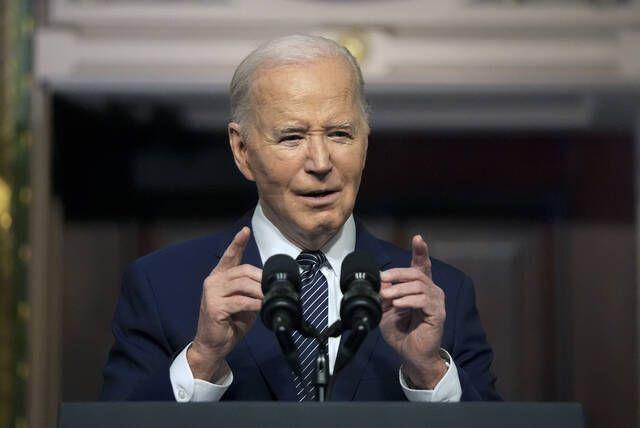President Joe Biden is set to announce a new effort to expand student loan relief next week for new groups of borrowers, after his initial attempt to cancel debt for millions who went to college was thwarted by the Supreme Court nearly a year ago.
Biden will give details about the plan on Monday in Madison, Wisconsin, where the main campus of the University of Wisconsin is located. The specific federal rules about who would qualify for reduced or eliminated student loan debt are not expected to be released then, according to anonymous sources.
Most of the details that Biden will discuss on Monday have already been communicated through a negotiation process at the Department of Education. The president had announced right after the Supreme Court decision that Education Secretary Miguel Cardona would handle the process because he had the authority under the Higher Education Act to waive or compromise student loan debt in specific cases.
However, the new plan aims to fulfill Biden's promise after the Supreme Court rejected his initial plan in June. The previous proposal, a $400 billion plan to cancel or reduce federal student loan debt, was deemed to require congressional approval by a majority of justices. Biden referred to that decision as a “mistake” and “wrong.”
The new announcement on student loan relief, which is important for younger voters, could help rally parts of Biden’s political alliance who have become disheartened over his job performance — people whose support the president will need to beat presumptive Republican presidential candidate Donald Trump this year.
The plan that Biden will detail is expected to extend federal student loan relief to new targeted groups of borrowers through the Higher Education Act, which administration officials believe provides a stronger legal basis than the expansive proposal that was rejected by a 6-3 court majority last year.
“This new approach is legally sound,” Biden said in June. “It’s going to take longer, but, in my view, it’s the best path that remains to providing for as many borrowers as possible with debt relief.”
Biden’s new attempt at cancellation is anticipated to be smaller and more specific than his original plan, which would have canceled up to $20,000 in loans for over 40 million borrowers. The specifics of the new plan have become clearer in recent months as the Education Department presented its ideas to a group of external negotiators with an interest in higher education, including students and loan servicers.
“President Biden’s anticipated additional executive action will significantly reduce the burden of student loans for millions of Americans,” Senate Majority Leader Chuck Schumer, D-N.Y., said Friday. “There is always more work to be done to alleviate the burden of student loan debt. And we will not stop until crippling student loan debt is a thing of the past.”
The agency outlined five groups of borrowers eligible to have some or all of their federal loans forgiven. The focus is on aiding those with high financial need, including many who would otherwise never be able to repay their loans.
The plan aims to help individuals whose unpaid interest has grown larger than the original loan amount. It would reset their balances to the original amount by removing up to $10,000 or $20,000 in interest, depending on their income.
Borrowers who have been repaying their student loans for many years would have any remaining debt erased under the department’s plan. Loans taken out for undergraduate education would be forgiven if the borrower had been making payments for at least 20 years. For other types of federal loans, it's 25 years.
The plan would automatically cancel loans for those who attended for-profit college programs considered “low-value.” Borrowers would qualify for forgiveness if the average federal student loan payment among graduates was excessively high compared to their average salary while they were enrolled.
Those eligible for other forms of loan forgiveness but have not applied would receive relief automatically. This includes Public Service Loan Forgiveness and Borrower Defense to Repayment programs, which have long been known for their challenging paperwork requirements.
In response to pressure from advocates, the department added a category for those experiencing “hardship.” It would provide forgiveness to borrowers deemed highly likely to default within two years. Additionally, more borrowers would be eligible for relief through a broad definition of financial hardship.
A series of hearings to develop the rule concluded in February, and the draft is now under review. Before finalization, the Education Department will need to release a formal proposal and open it to public comments.
The latest effort to cancel loans complements other targeted initiatives, including those directed at public service workers and low-income borrowers. Through these efforts, the Biden administration claims to have forgiven $144 billion in student loans for almost 4 million Americans.



